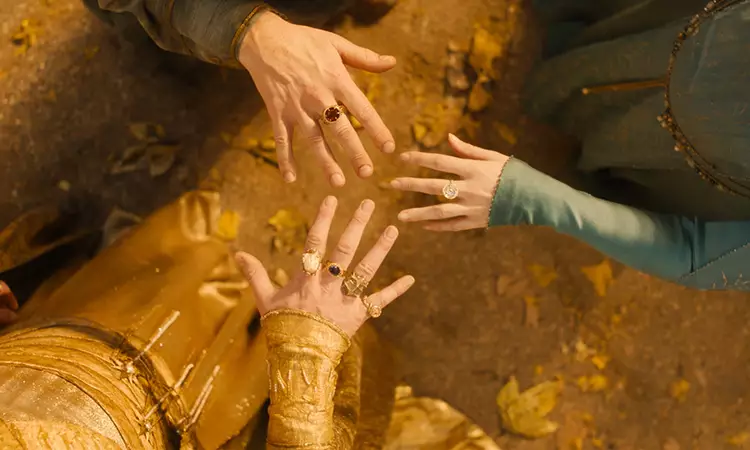The rich tapestry of J.R.R. Tolkien’s universe continues to unfold in the highly anticipated second season of *The Lord of the Rings: The Rings of Power*. With a remarkable opening that reveals Halbrand, portrayed with remarkable finesse by Charlie Vickers, as Sauron himself, the narrative plunges viewers deeper into the intricate web of deceit and ambition that saturates Middle-Earth. This initial twist sets the tone for a season characterized by the exploration of human flaws—namely vanity, greed, and ambition—as they serve as conduits for the resurgence of evil.
Central to the unfolding narrative is the relationship between Sauron and Lord Celebrimbor, played by Charles Edwards. Their dynamic is laden with tension, as Sauron expertly exploits Celebrimbor’s ego to manipulate him into forging more rings, which foreshadows the calamities that will follow. This theme of manipulation underscores the broader conflicts within the series, where power dynamics and the allure of mastery over darkness are vividly portrayed. Each interaction feels charged, allowing viewers to witness the sinister intricacies of Sauron’s charm and Celebrimbor’s ambition.
In season two, the introduction of characters like Tom Bombadil, brought to life by Rory Kinnear, adds a fresh layer of complexity. His cheerful demeanor contrasts starkly with the mounting tension around him. Bombadil, with his distinct Cornish accent, serves as a guiding light for The Stranger (Daniel Weyman), further enhancing the narrative’s quest motif. Meanwhile, the portrayal of Dwarven politics, particularly through King Durin (Peter Mullan) and the prince (Owain Arthur), is illustrative of internal struggles and power tussles that accompany the search for supremacy of the rings.
The character arcs are further complicated by Isildur’s (Maxim Baldry) journey through perilous terrains, where he faces challenging beings crafted from pure malice. Simultaneously, Galadriel’s quest for integrity amidst temptation standouts, showcasing a profound narrative that balances personal growth against the backdrop of emerging darkness. Her journey is emblematic of the overarching struggle against the seductive nature of power, making it relatable to contemporary audiences.
Visually, the series excels—especially in its latter episodes that deliver spectacular battle sequences rooted in masterful storytelling. Bear McCreary’s stirring score, which complements Howard Shore’s renowned compositions, elevates the emotional weight of pivotal moments. The music plays a dual role—imbuing earlier scenes with profound pathos and heightening the intensity of climactic confrontations.
Though the season takes time to weave its multiple storylines, the culmination is a satisfying narrative that resonates with both die-hard Tolkien enthusiasts and newcomers alike. Certain characters, like the Harfoots, may feel underdeveloped, yet they infuse the series with a refreshing sense of hope and levity. Their presence softens the darker overtones and introduces lighter, more romantic undertones necessary for balance.
As season two unfolds, it promises to continue expanding the lore of Tolkien’s world while highlighting the age-old struggle between light and shadow—making it a riveting chapter in the beloved saga.


Leave a Reply